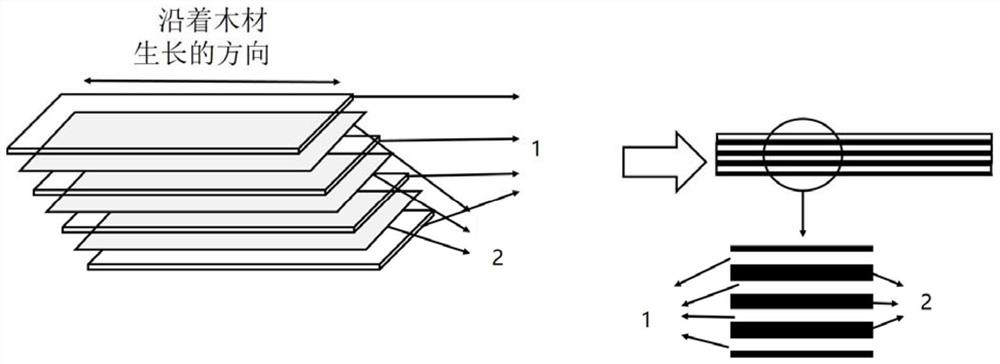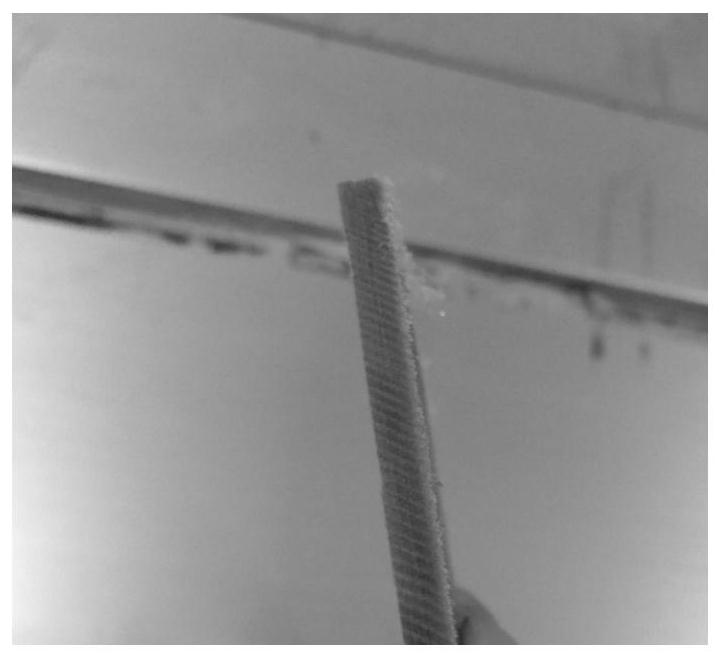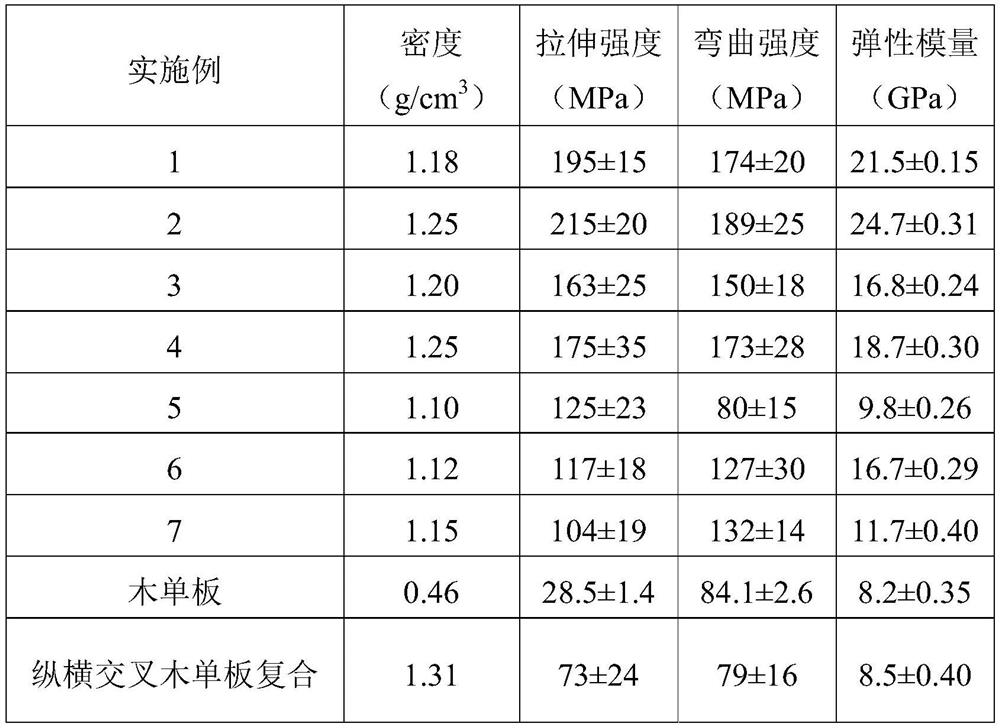Preparation method of wood-reinforced thermoplastic resin-based environment-friendly formaldehyde-free composite material
A technology for strengthening thermoplastic and thermoplastic resins. It is used in wood treatment, wood impregnation, wood impregnation, etc. It can solve the problems of reducing material strength, easy creep of wood plastic materials, and loss of structure stability. Anti-corrosion and weather resistance, good stability
- Summary
- Abstract
- Description
- Claims
- Application Information
AI Technical Summary
Problems solved by technology
Method used
Image
Examples
preparation example Construction
[0034] The preparation method of the wood-reinforced thermoplastic resin-based composite material of the present invention comprises the following steps:
[0035] (1) Rotary cutting of veneer: The solid wood is made into a veneer by the rotary cutting process, and the thickness of the veneer is 50 μm to 3.0 mm.
[0036] (2) Partial lignin removal: place the veneer in the reaction kettle, add an appropriate amount of water, and add a lignin removal agent based on the fact that the water is completely submerged on the veneer, heat it at high temperature and pressure for 5-60 minutes to complete the reaction, and then wash For the veneer, re-add water of the same quality as for cooking, and then add hydrogen peroxide with a mass fraction of 5-20%, boil for 10-30 minutes to complete the reaction, clean the veneer and dry it for later use.
[0037] The de-lignification refers to the wood veneer treated with a removing agent, and the mass of remaining lignin accounts for 30%-100% of...
Embodiment 1
[0046] Poplar was selected as a raw material, and poplar veneers with a thickness of 100 μm were prepared by rotary cutting, and 50 veneers were immersed in a container containing a mixed solution of sodium hydroxide and sodium sulfite (wherein the concentration of sodium sulfite was 1.0 mol / L, The concentration of sodium hydroxide is 0.1mol / L), the volume of the solution is 500mL, at a temperature of 100°C and a pressure of 0.1MPa, boil in water for 30min, then take out the wood veneer and wash it with distilled water for 3 times. Add 500 mL of water to the container again, add hydrogen peroxide (the mass fraction of hydrogen peroxide accounts for 10% of the total solution), boil in water for 1 hour, take it out, wash with distilled water 3 times, and dry. Put the dry wood veneer into the solution containing KH550 coupling agent (mass concentration is 2%) for 2 hours, take it out, place it in the oven to dry for 2 hours (oven temperature 120°C), and then place the wood veneer ...
Embodiment 2
[0048] Poplar was selected as a raw material, and poplar veneers with a thickness of 100 μm were prepared by rotary cutting, and 50 veneers were immersed in a container containing a mixed solution of sodium hydroxide and sodium sulfite (wherein the concentration of sodium sulfite was 1.0 mol / L, The concentration of sodium hydroxide is 0.1mol / L), the volume of the solution is 500mL, at a temperature of 100°C and a pressure of 0.1MPa, boil in water for 30min, then take out the wood veneer and wash it with distilled water for 3 times. Add 500 mL of water to the container again, add 20 mL of hydrogen peroxide (the original concentration of hydrogen peroxide is 36%), boil for 1 hour, take it out, wash with distilled water 3 times, and dry. Align the wood veneers along the same direction, and at the same time add polypropylene resin in the middle of each veneer, and place the compatibilizer PPg-MAH evenly in the resin, the resin mass is 15% of the total mass, the compatibilizer mass ...
PUM
| Property | Measurement | Unit |
|---|---|---|
| density | aaaaa | aaaaa |
| density | aaaaa | aaaaa |
Abstract
Description
Claims
Application Information
 Login to View More
Login to View More - R&D
- Intellectual Property
- Life Sciences
- Materials
- Tech Scout
- Unparalleled Data Quality
- Higher Quality Content
- 60% Fewer Hallucinations
Browse by: Latest US Patents, China's latest patents, Technical Efficacy Thesaurus, Application Domain, Technology Topic, Popular Technical Reports.
© 2025 PatSnap. All rights reserved.Legal|Privacy policy|Modern Slavery Act Transparency Statement|Sitemap|About US| Contact US: help@patsnap.com



